TCL MQLED85, or model C765, is a television that can truly surprise, especially in this price range. It is one of the cheapest models with mini-LED technology, which is immediately evident from the picture quality. The blacks are deep, and the brightness is sufficient even in a brightly lit room. Thanks to the large number of dimming zones, watching films in the evening is a pure pleasure – the blacks are genuinely deep, and the image in dark scenes appears clear. However, it is not perfect – in some shots, you can notice minor issues with small bright elements, but this is really a trifle compared to what this model offers. Google TV works excellently here – there are plenty of applications, and using the system is simply convenient. Voice control in Polish operates flawlessly, which can be particularly useful if you don’t want to type film titles using the remote. Of course, there are minor shortcomings, like the lack of recording features, but these are not things that hinder everyday use. For gamers, it is also a great option. Support for HDMI 2.1, VRR, and low input lag make the television handle consoles well and compete effortlessly with more expensive models from Korean or Japanese manufacturers. It's hard to find something better in this price range concerning smooth and responsive gameplay. During testing, we encountered a few minor software issues, but it's difficult to say if this is a significant drawback. We hope that TCL will release updates, so there is a chance this issue will be resolved quickly. TCL MQLED85/C765 is an excellent choice if you’re looking for a television with good picture quality and modern features at a reasonable price. This model combines accessible mini-LED technology with a convenient Google TV system, while also performing exceptionally well in gaming. The minor software shortcomings are something you can live with, especially considering what this television offers in its class.
- Matching (Score)
- Our verdict
- TV appearance
- Where to buy
- Contrast and black detail
- HDR effect quality
- Factory color reproduction
- Color reproduction after calibration
- Smoothness of tonal transitions
- Image scaling and smoothness of tonal transitions
- Blur and motion smoothness
- Console compatibility and gaming features
- Input lag
- Compatibility with PC
- Viewing angles
- TV efficiency during daytime
- Details about the matrix
- TV features
- Apps
- Playing files from USB
- Sound
TCL MQLED85 / C765 vs Hisense E8Q
Direct compare
C765 / MQLED85
E8Q

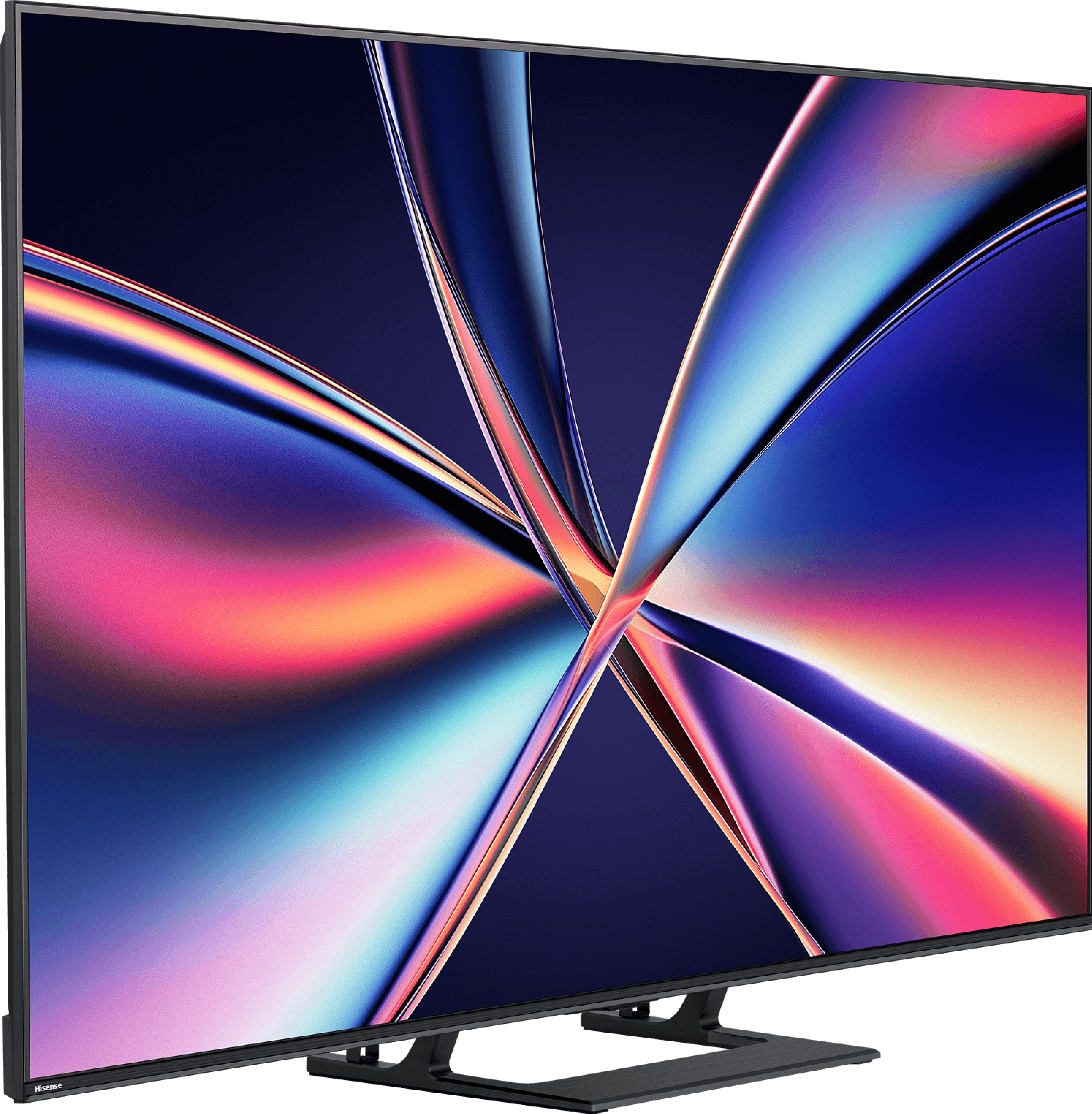
Panel type: LCD VA
Resolution: 3840x2160
System: Google TV
Model year: 2024
Complete the survey to find out the result

Panel type: LCD VA
Resolution: 3840x2160
System: VIDAA
Model year: 2025
Complete the survey to find out the result

Overall rating
7.2
7.0
Movies and series in UHD quality
6.8
6.7
Classic TV, YouTube
6.6
6.8
Sports broadcasts (TV and apps)
6.5
6.5
Gaming on console
8.6
8.0
TV as a computer monitor
8.6
8.6
Watching in bright light
6.3
6.2
Utility functions
7.1
8.9
Apps
9.6
7.7
Sound quality
6.9
5.5
Complete the survey to find out what fits your preferences
Advantages
Great choice for gamers - plenty of features, low input lag, 144Hz
High brightness of the panel - good performance during the day
Good black levels and contrast
Advanced Google TV
Premium build at a low price
Great contrast and deep blacks
Very good fluidity of tonal transitions (close to reference level)
High brightness
Support for 4K 144 Hz and even 240 Hz in Full HD
VRR, ALLM, G-SYNC – a complete package for gamers
Low input lag
Many classic television features integrated into the VIDAA system
Disadvantages
Average viewing angles
Missing recording function
No support for HGiG (makes setting up HDR on consoles difficult)
Poor viewing angles – typical for VA panels
Closed VIDAA system – lacks some applications
Inferior sound quality compared to the twin model U7Q
Our verdict
The Hisense E8Q is a television that clearly draws heavily from the U7Q model – and very well so. After all, it is his European version, not another "slimmed down" mutation. Just moments with this screen reveal that the E8Q is putting up a fight. And in many respects, it really succeeds. To start with – what impresses: the blacks are deep, the contrast is high, and the brightness exceeds a level we can simply call satisfactory. Add to this almost perfect fluidity of tonal transitions and we have an image that looks very mature, especially for this price segment. In gaming? Just as good. Support for VRR, ALLM, 144 Hz in 4K and even 240 Hz in Full HD – it's hard to nitpick here. Well… almost. Because the E8Q has one additional flaw compared to the U7Q – sound. In our unit, even at moderate volume levels, the back of the casing began to resonate, generating rather unpleasant crackles. This could be a fault of the test unit, but since the U7Q simply performed better – it’s worth noting. Especially if you find both models at a similar price. We can confidently say that the E8Q is a television that can boldly compete for the attention of those seeking a quality Mini-LED at reasonable prices. If a good price opportunity arises, it is simply worth it – because we get almost the same as in the U7Q. And that means a really solid picture, great gaming features, and overall a very good piece of equipment that one can stick with for a longer time.
TV appearance





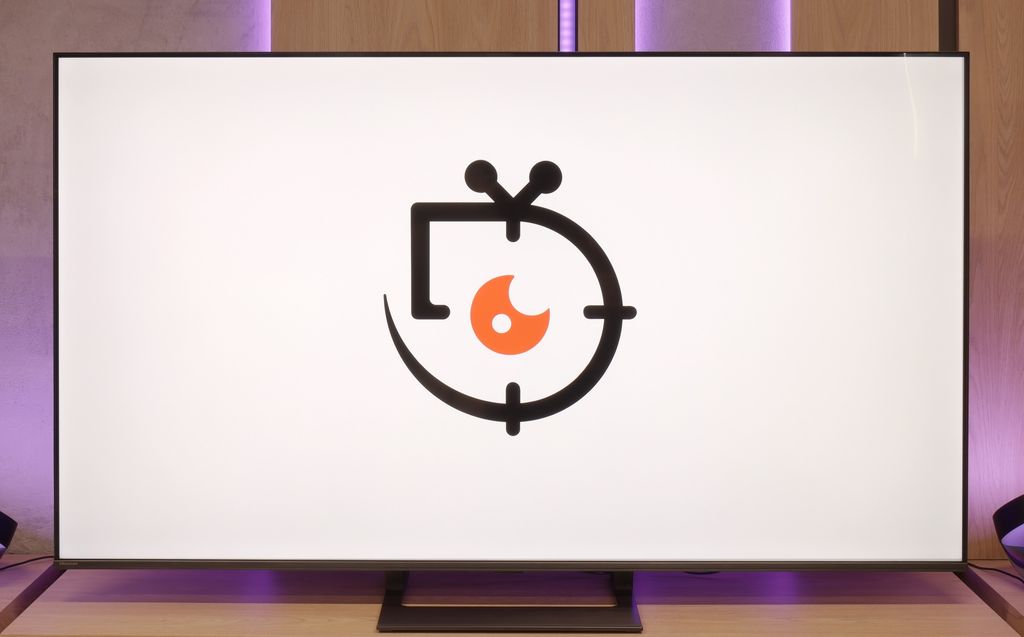
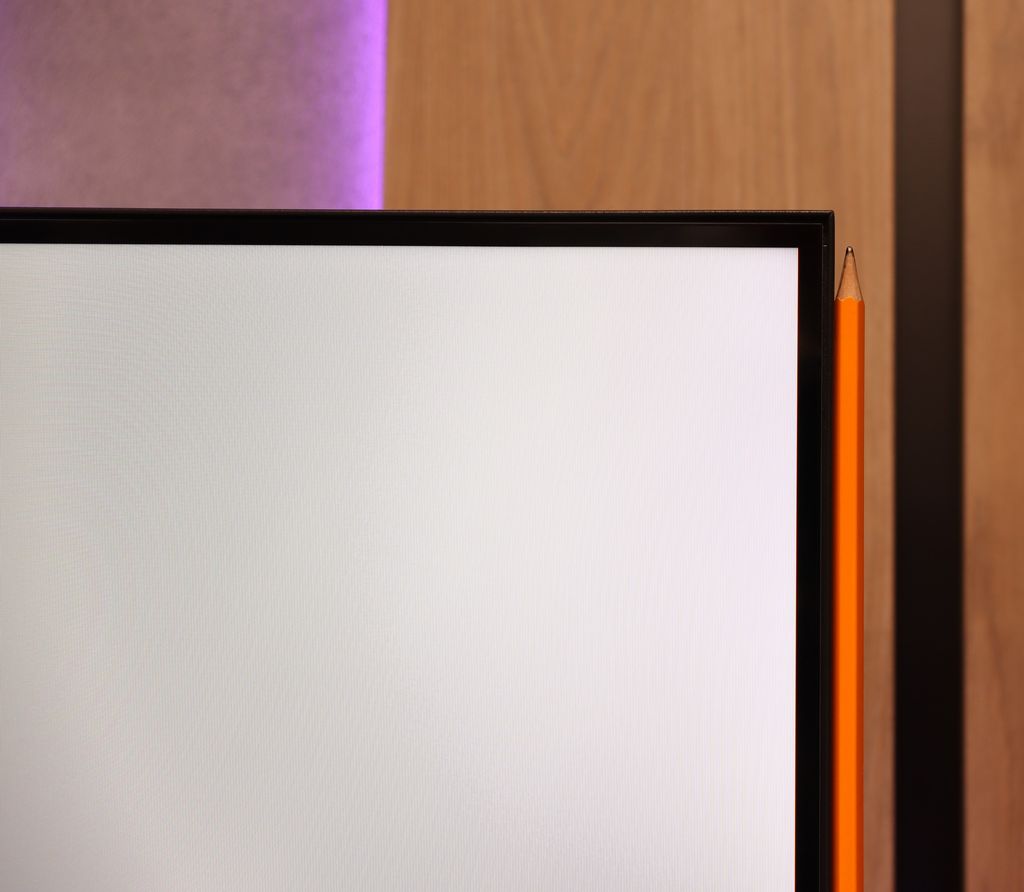
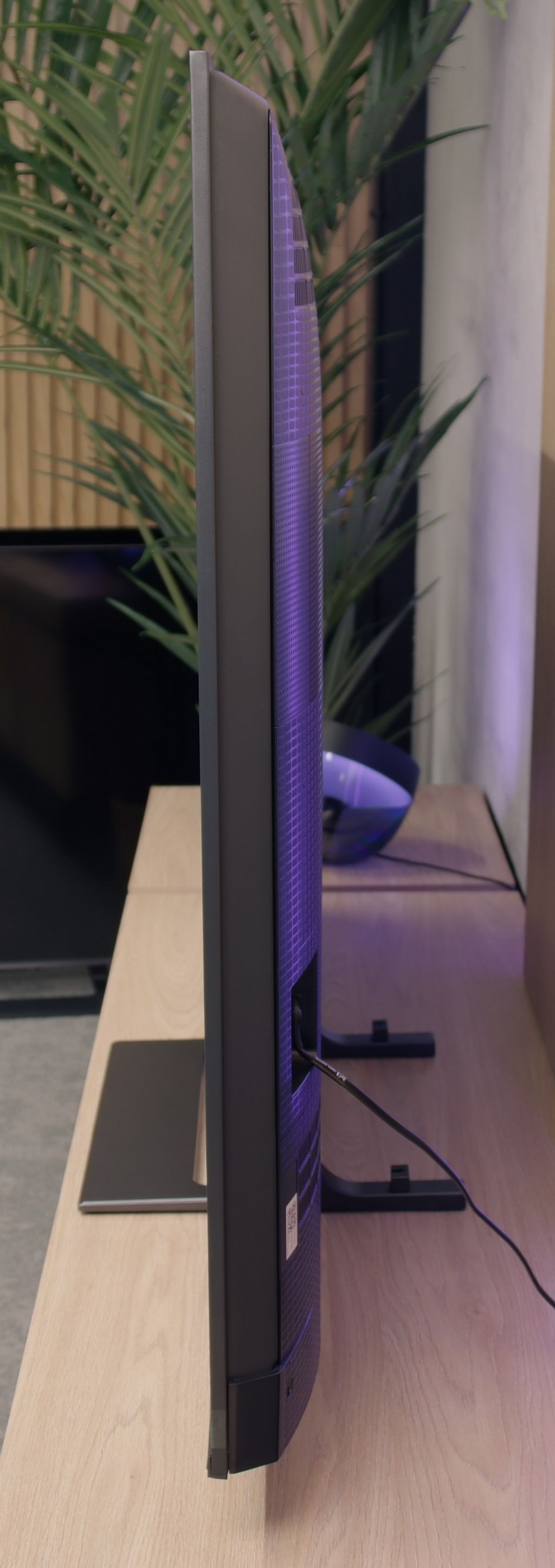
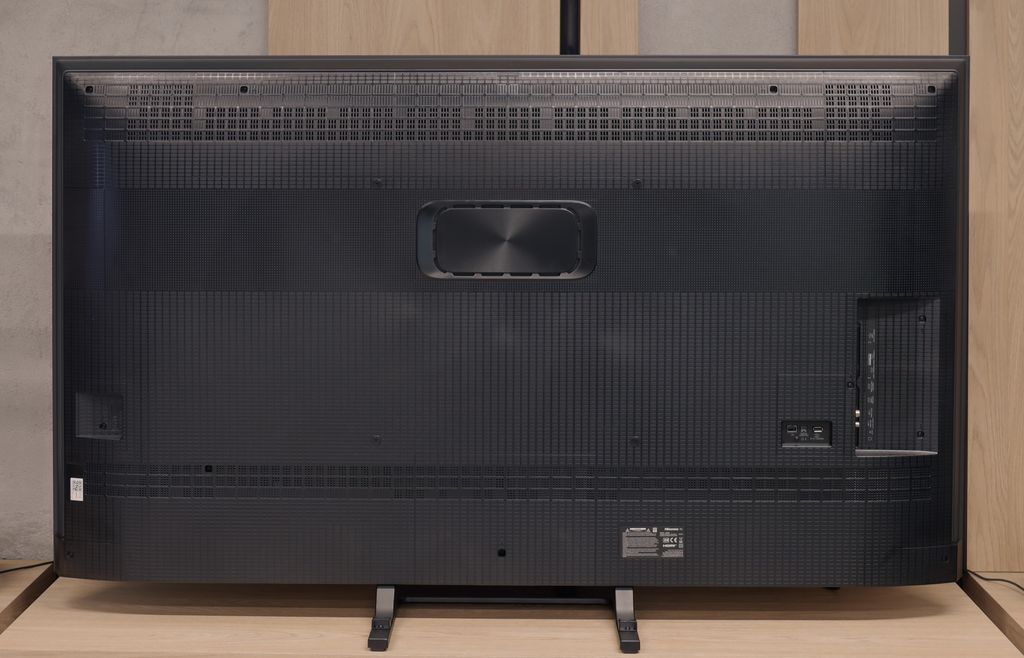
Contrast and black detail
7.7/10
7.6/10
Local dimming function: Yes, number of zones: 720 (36 x 20)
Local dimming function: Yes, number of zones: 220 (10 x 22)
Contrast:

Result
∞:1

Result
30,150:1

Result
17,500:1

Result
9,500:1

Result
5,750:1

Result
277,000:1

Result
43,700:1

Result
15,750:1

Result
8,850:1

Result
6,350:1
Halo effect and black detail visibility:

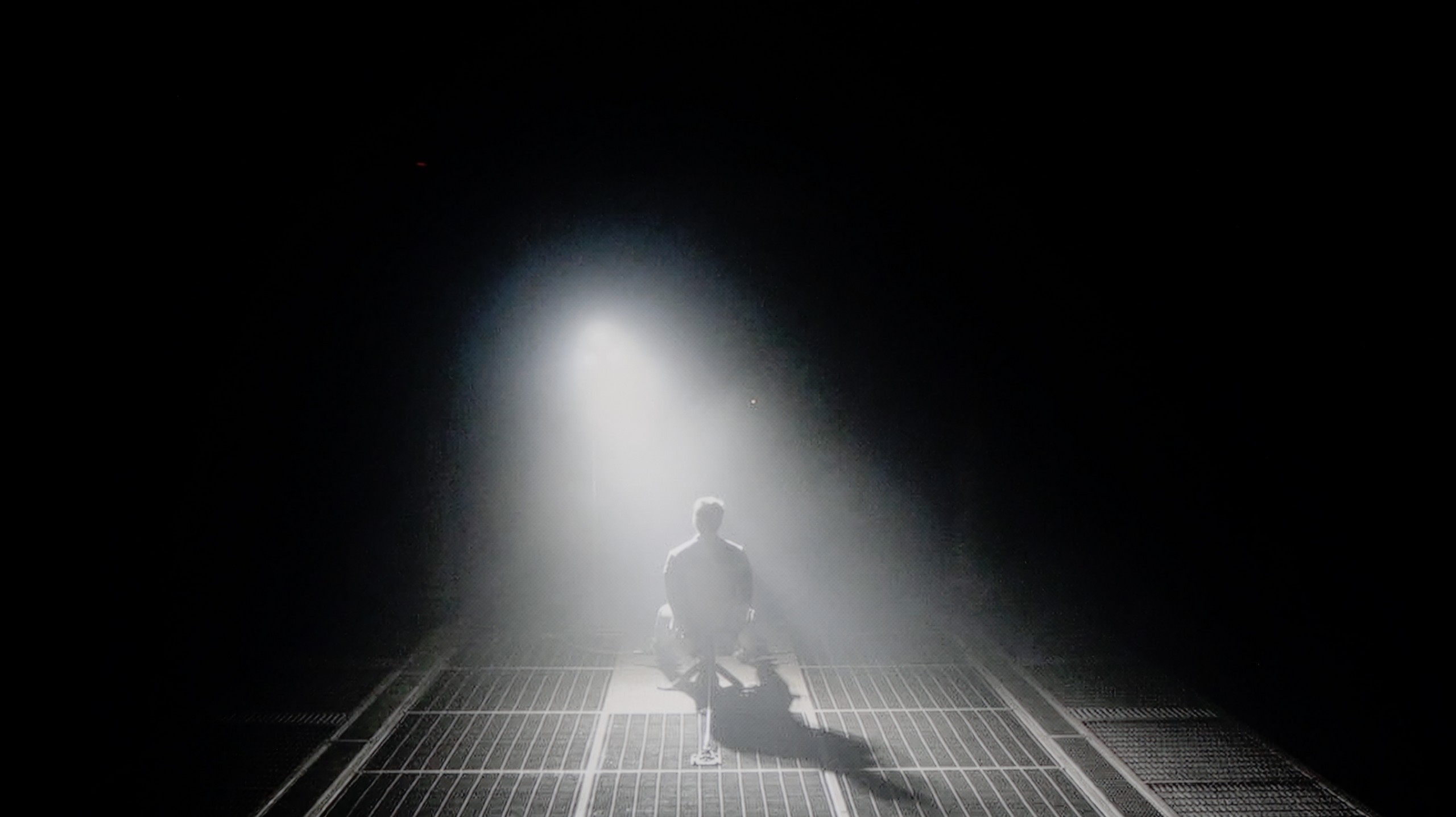
TCL MQLED85/C765 stands out due to its use of a VA panel and Mini LED backlighting, which makes a significant difference compared to traditional backlighting systems. Mini LED, with its considerably smaller diodes, allows for more precise control of the screen's backlighting, resulting in much better contrast and deeper blacks. The 55-inch model we are testing has an impressive number of over 700 local dimming zones, providing exceptional precision in image display. However, it is worth noting that the number of backlighting zones may vary depending on the screen size – for larger diagonals, the number of zones naturally increases due to the larger screen area, allowing larger displays to achieve better results in terms of contrast and black levels. Thanks to the vast number of zones, the TCL MQLED85/C765 achieved a performance comparable to OLED screens on our first test scene from the film "Oblivion," offering nearly reference-level contrast. But what happens when we test this model in even more demanding conditions? How will the television perform in more challenging scenarios? Overall, the TCL MQLED85/C765 performs very well in displaying blacks, but in some cases, the local dimming algorithm is not perfect. On dark backgrounds, smaller bright elements can lose clarity and brightness, as confirmed by our recent test scene from the Pioneer Kuro test disc. Despite some imperfections in the local dimming algorithm and the slight occurrence of the HALO effect (which is a bright halo around bright objects on a dark background caused by screen local dimming deficiencies), the results achieved by the TCL MQLED85/C765 are impressive, especially considering its price. This television offers contrast and black depth that can compete with models that are even half again as expensive.
Similar to the U7Q, the E8Q model uses a VA panel and Mini-LED backlighting. The number of dimming zones also remains at a very similar level – in the 65-inch variant we tested, we counted 220 zones, which is exactly the same as in the U7Q. On paper, this looks really good for this price segment, but even better – in practice. The contrast is high, and the black can be really deep. In many scenes, the lights are clearly separated, and the image gains a sense of depth. This is one of those cases where Mini-LED shows that it can approach the quality of OLEDs – of course, assuming that we understand the limitations we have to contend with. In very challenging scenes, there may be slight brightenings or a small halo effect around bright objects, but these phenomena are typical of this technology and do not stand out strongly. Ultimately – the contrast and blacks in the E8Q are really solid, almost identical to those in the U7Q model. It’s hard to find anything to criticise here, especially when we consider the price of the television.
HDR effect quality
6/10
4.5/10
Luminance measurements in HDR:

Result
1016 nit

Result
365 nit

Result
765 nit

Result
235 nit

Result
1178 nit

Result
531 nit

Result
148 nit

Result
320 nit

Result
100 nit

Result
625 nit
Scene from the movie “Pan” (about 2800 nits)


Scene from the movie “Billy Lynn” (about 1100 nits)

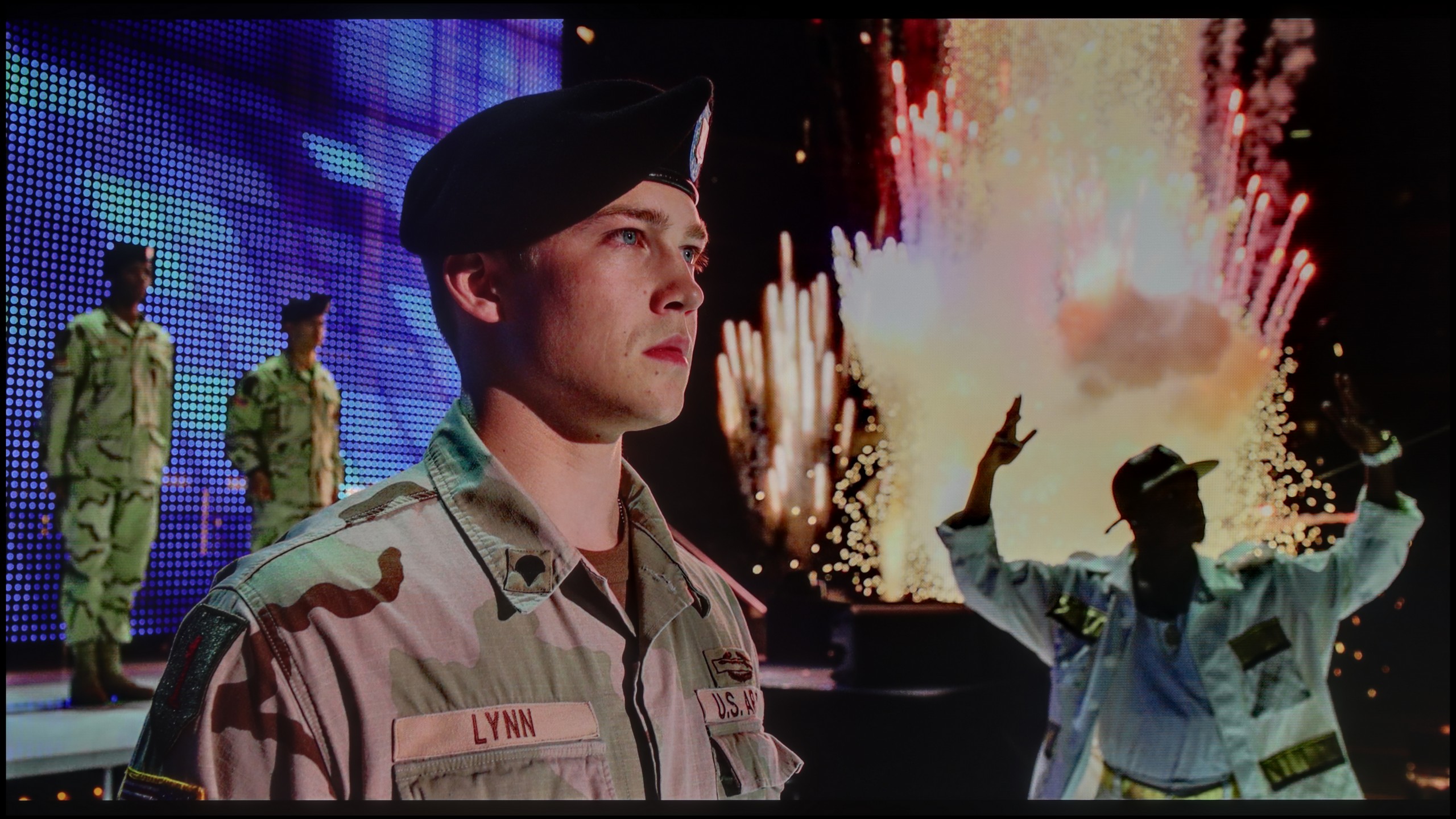
Static HDR10


Dynamic: Dolby Vision
Dynamic: Dolby Vision


HDR luminance chart:
Hisense E8Q
Luminancja HDR
Luminance of RGB colors
TCL MQLED85 / C765
Luminancja HDR
Luminance of RGB colors
The television TCL MQLED85/C765 handles HDR well. In the tested movie scenes where the screen is covered with 100% brightness, the model achieves impressive results of around 1000 nits, providing intense and realistic rendering of HDR content. However, similar to contrast, the dimming algorithm may exhibit certain limitations. Despite a large number of Mini LED zones, the television does not always manage to "wow" the user with brightness in very challenging test scenes. For example, in the scene from the film "Life of Pi," where a bright moon appears against a dark background, and in another scene from "Sicario 2," where a very bright light effect is visible on a dark background, the television did not reach maximum intensity. For users expecting perfect HDR performance in such extreme cases, the TCL MQLED may be slightly disappointing. However, in terms of colours, the television stands out with very high coverage of the DCI P3 colour palette at 95%, which is an impressive result, comparable to much more expensive models. TCL MQLED85 / C765 offers support for various HDR formats, including Dolby Vision and HDR10+, which is significant for cinema image enthusiasts. Although this model achieves brightness over 1000 nits, TCL MQLED85 may struggle to reflect details in very high-contrast scenes. For better HDR quality control, C765 is equipped with a dynamic tone mapping option, making the image more realistic and natural depending on the content.
Since the E8Q is a twin of the U7Q, it’s no surprise that the quality of the HDR effect is nearly identical. On paper, it looks promising – a peak brightness of 800 nits can impress in many scenes. Moments such as flashes of light in “The Meg” or shots of the sun in “Life of Pi” can indeed evoke a 'wow' effect. But the longer we watch, the more we notice the limitations. The problem arises when small, bright details need to be shown against a dark background. In such situations, the dimming algorithms try to preserve contrast but end up dimming what should shine the most. Instead of dazzling details, we get almost invisible points of light. This is typical for Mini-LEDs in this price segment and is not surprising – but it’s worth knowing that the HDR effect will not always be fully preserved. Fortunately, the colour performance offers reasons to be pleased. Coverage of the DCI-P3 colour gamut at around 94% is a very good result, and the applied layer of quantum dots (more precisely, PFS) does its job – the colours are saturated and vibrant, especially with 4K content.
Factory color reproduction
5.2/10
6.5/10


Factory Mode
After calibration
The television TCL MQLED85/C765 was tested in movie mode, which, although it seems to be the best setting from the manufacturer, is not without flaws. The colour reproduction in HD/SDR mode MQLED85 shows some shortcomings. In the analysis of white balance, there is a significant lack of blue, which can affect the overall image quality, especially in bright scenes where blue shades are crucial for natural representation. The overall shape of the image may then appear too warm. Regarding gamma contrast, the graph shows a large jump above the reference line of 2.4 at the beginning, which may suggest significant dimming of brightness in darker areas, leading to loss of detail in black. Then, for most of the time, the values lie below this line, which may lead to loss of detail in brighter parts of the image. Such a distribution can negatively impact perceived image quality, particularly when watching regular television in HD quality.
In the case of 4K HDR image quality of the TCL MQLED85/C765, there is a noticeable excess of red in the analysis of white balance. This excess can significantly affect the viewer's experience, leading to several significant effects. Firstly, an excessive amount of red can make other colours, such as green or blue, appear muted or unnatural. This distortion of colour balance can result in an overall impression of "over-saturation," which detracts from the naturalness and authenticity of the image. As for contrast, the EOTF (Electro-Optical Transfer Function) graph indicates that most values are above the reference line, suggesting an intense boost in brightness in bright areas of the image. However, there is an exception at the beginning of the graph, where the EOTF line is below the reference line, which can lead to excessive dimming of small light elements.
Users should be aware that despite using the best mode, which is movie mode, the television is not free from flaws in terms of image settings, so it is worth considering adjusting the settings to achieve better results.
Testing the Hisense E8Q in Filmmaker mode, we were hoping for a possibly neutral image close to the director's vision. Unfortunately – although it doesn't look bad on paper (the colour reproduction errors are not significant), in practice the image appears not entirely natural. The reason? An overly strong boost in blue colour and a lack of red in the white balance. The effect? Scenes look cool, and the white seems slightly bluish. Alongside the U7Q model, we also noticed a specific approach to brightness management here. The brightness mapping curve for HDR content (EOTF) shows that the television can significantly dim small, bright elements on the screen to maintain contrast – but sometimes it goes too far in this. On the other hand, larger, very bright areas can be excessively brightened, which disrupts tonal balance. This is a compromise that may not suit everyone – especially if you want an as faithful image as possible right out of the box.
Color reproduction after calibration
7.8/10
7.4/10



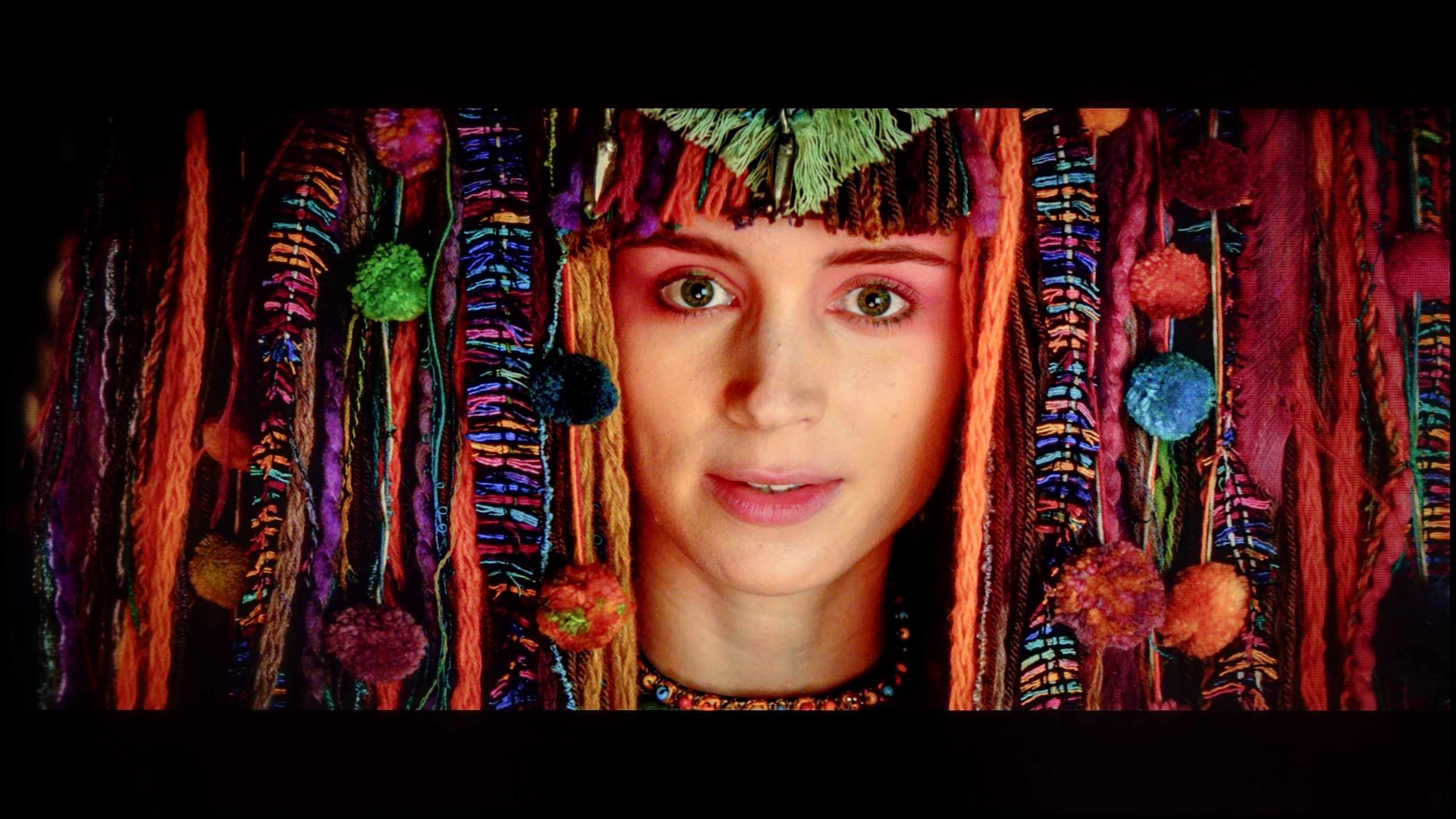
After the professional calibration of the television TCL MQLED85/C765, its colour properties in movie mode have significantly improved, resulting in a much more satisfying visual experience. Both in SDR and HDR modes, the white balance shows no serious errors, and the graph appears much better harmonised. Users can now enjoy natural colour reproduction, which is crucial for obtaining an authentic experience when watching films. It is worth noting that in HDR content, there may be slight colour reproduction errors at the end of the graph, but these are much smaller than before calibration. As a result, characters and landscapes become more realistic, enhancing the depth of immersion in the story.
In terms of contrast, the gamma curve, responsible for HD quality, has been completely free of drops below the reference line, meaning better detail visibility in dark scenes. Nevertheless, there is still a slight boost at the beginning of the graph, which may affect the perception of bright elements. For HDR content, the EOTF curve also exhibits smaller errors, although certain issues with medium tone reproduction may still be noticeable. The EOTF curve measured on actual movie scenes still shows a significant brightness boost, making the image appear more intense but artificially brightened. This is a typical problem for TCL televisions, which may appeal to inexperienced viewers, but can be irritating for those more familiar with an ideal image.
What benefits does professional calibration bring for film enthusiasts? Thanks to it, viewing becomes even more realistic and immersive, and each scene can be fully experienced, preserving details and natural colours.
The calibration of the Movie mode yielded really good results, especially when it comes to SDR content. We managed to balance the white levels, which made the image look more natural – it appeared almost reference-quality. The colours were well-saturated, and the overall perception of the content improved significantly. Unfortunately, when we switched to HDR materials, familiar issues from the U7Q model returned. The television still likes to "do its own thing," as evident from the analysis of the brightness characteristic EOTF – despite calibration, the E8Q still dimmed fine details in the shadows, while the bright areas of the screen could be excessively boosted. In practice, this means that in darker scenes, some of the smallest details could simply disappear. Although it must be acknowledged that the entire calibration process brought a lot of good, not everything can be circumvented – even with the use of professional tools. The E8Q can impress with its picture, but in HDR content, its design limitations become apparent, and it is worth keeping this in mind.
Smoothness of tonal transitions
7/10
9.9/10





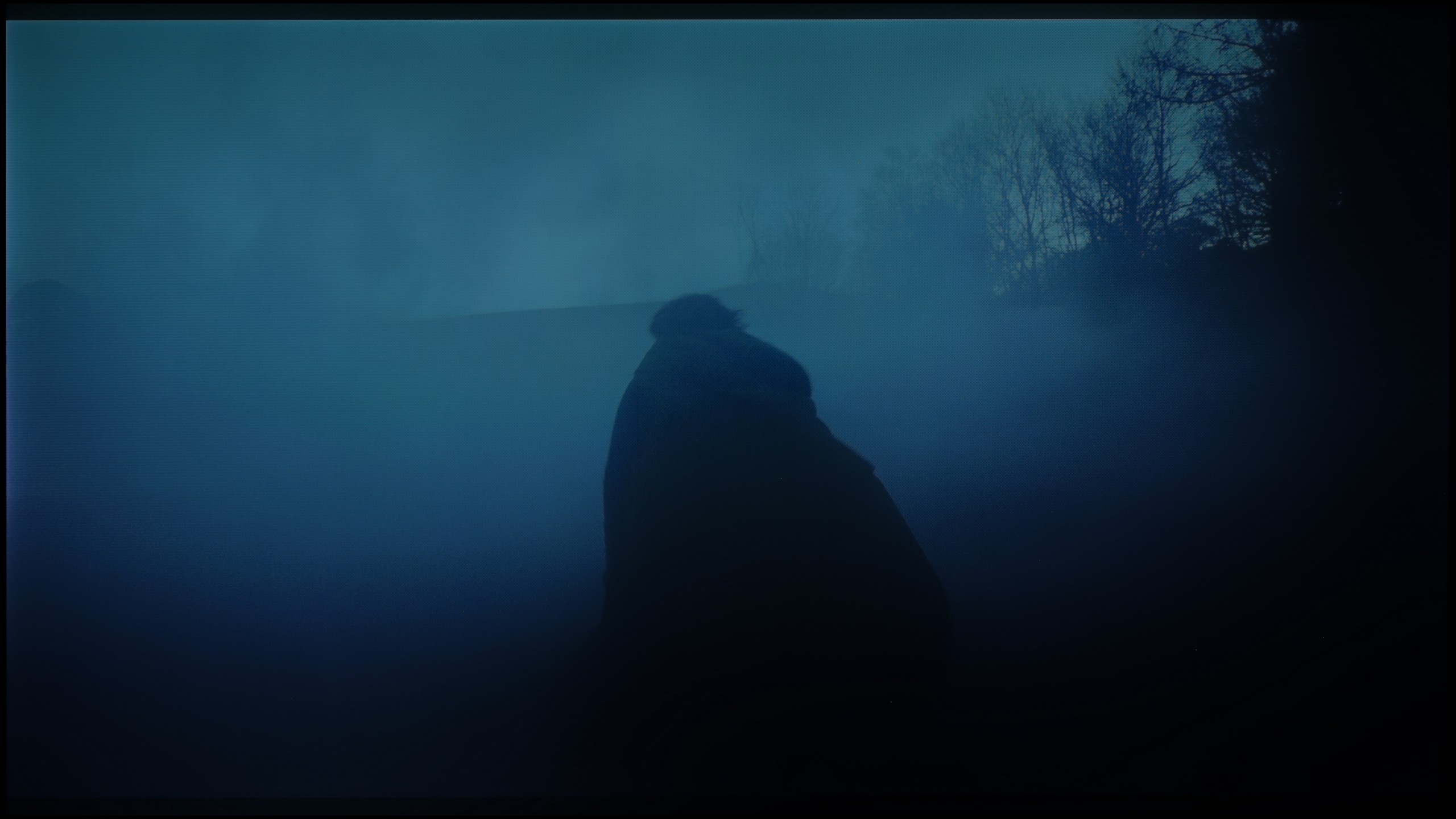

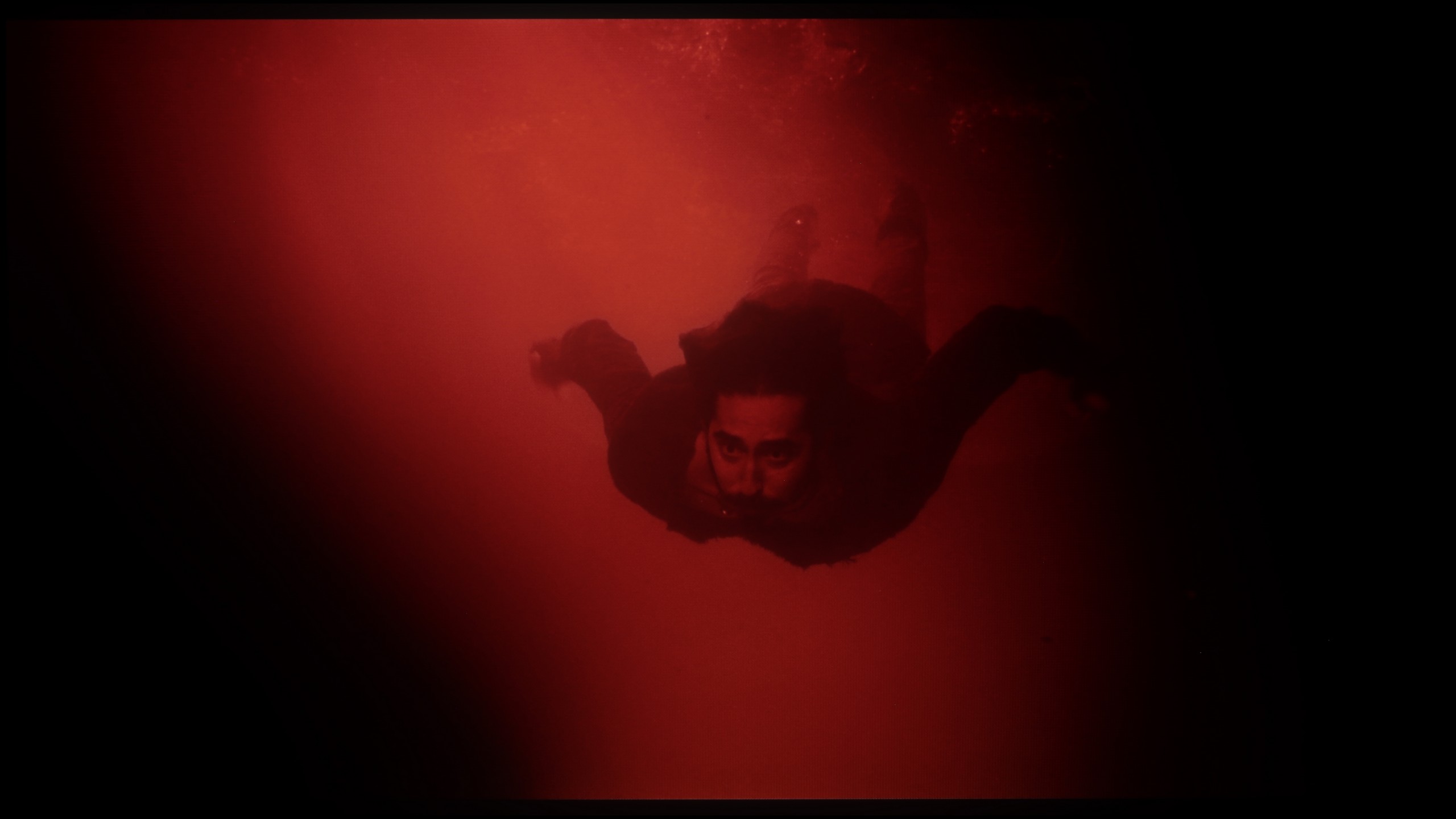




The fluidity of tonal transitions in the television TCL MQLED85/C765 is quite decent, although some issues are noticeable in both bright and dark test scenes. In particular, colour blending is evident in the scene from the film "The Green Knight", where the red colour of the water transitions to black. Despite these imperfections, the overall quality of gradation is acceptable and does not overly detract from the visual experience. The television handles most scenes well, offering satisfactory tonal transitions, which contributes to an overall pleasing visual experience that will not spoil our cinema enjoyment.
In this category, the Hisense E8Q really demonstrates class. The transitions between colours are very smooth, with no 'banding' or clear boundaries between tones. The image looks natural, and the colour gradation is exceptionally good – even in more difficult scenes. If there are any minor imperfections, they are subtle enough not to be noticeable. It's hard to nitpick here – it looks almost flawless.
Image scaling and smoothness of tonal transitions
5.1/10
6/10
Smooth transition function


Image without overscan on the SD signal


Let’s take another look at the tonal transitions in the TCL MQLED85/C765 television, but in the context of poorer image quality. Despite the presence of the "Gradual Smoothing" option, when set to "low," the effects are practically invisible, disappointing users expecting an improvement in image quality. On the other hand, the "high" setting produces minimal results, and worse still, it can blur significant details, negatively affecting the sharpness and clarity of the displayed image. However, in the context of image scaling, the television successfully displayed the image without overscan, meaning we do not lose any part of the view. The image looks rather decent, and details such as tree branches or the outlines of models do not exhibit significant jaggedness, which positively impacts the visual quality.
In the case of older materials with lower quality, a gentle smoothing of tonal transitions often comes in handy. The Hisense E8Q, like the U7Q, features an "Smoothing and Gradient Image" function, but unfortunately – its effectiveness leaves much to be desired. The "Low" mode is almost imperceptible in operation, and the higher settings do not improve transitions but simply blur the details. The good news is that the function does not compromise film grain, meaning it does not worsen the structure of the image. On the plus side, scaling is commendable. The television is able to sensibly upscale older content to a higher resolution – without artificially accentuating contours or excessive sharpening. Although it does not match the best models in this category, it performs quite well for its class.
Blur and motion smoothness
7.5/10
7.5/10


Blur (native resolution, maximum refresh rate):



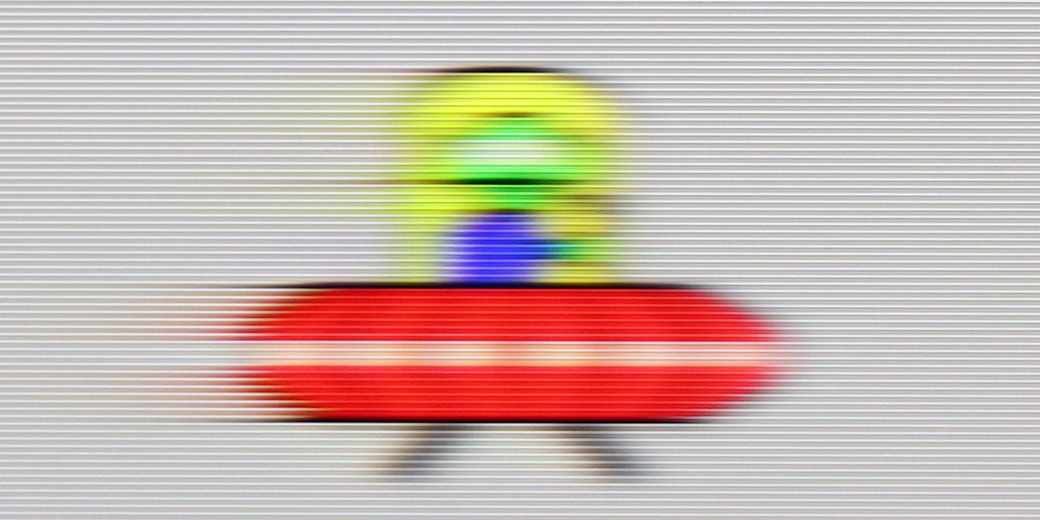
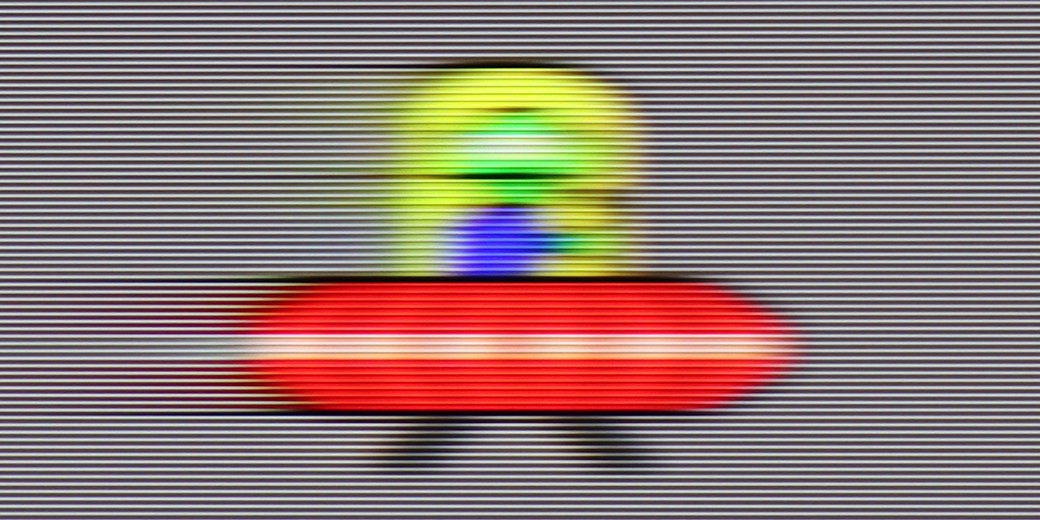
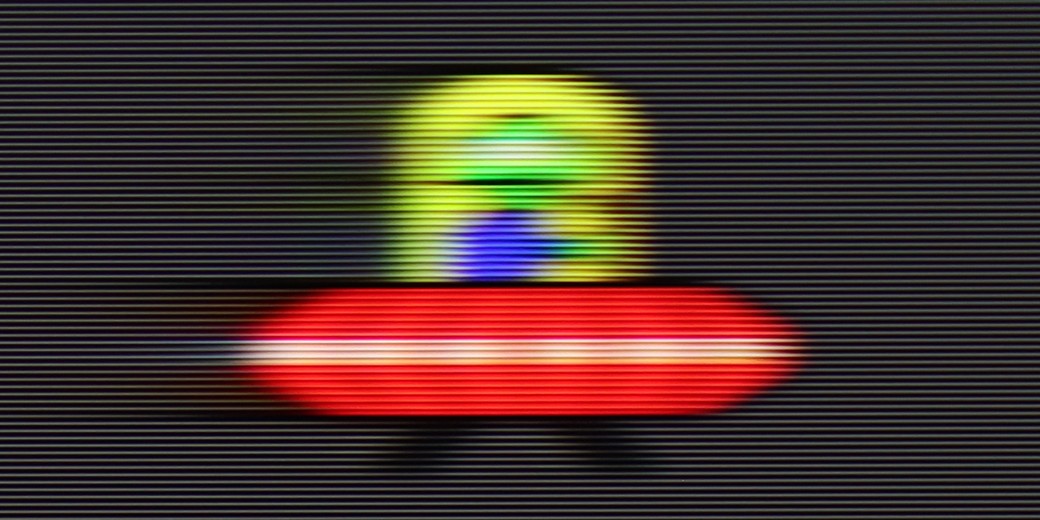
Blur (BFI function enabled):





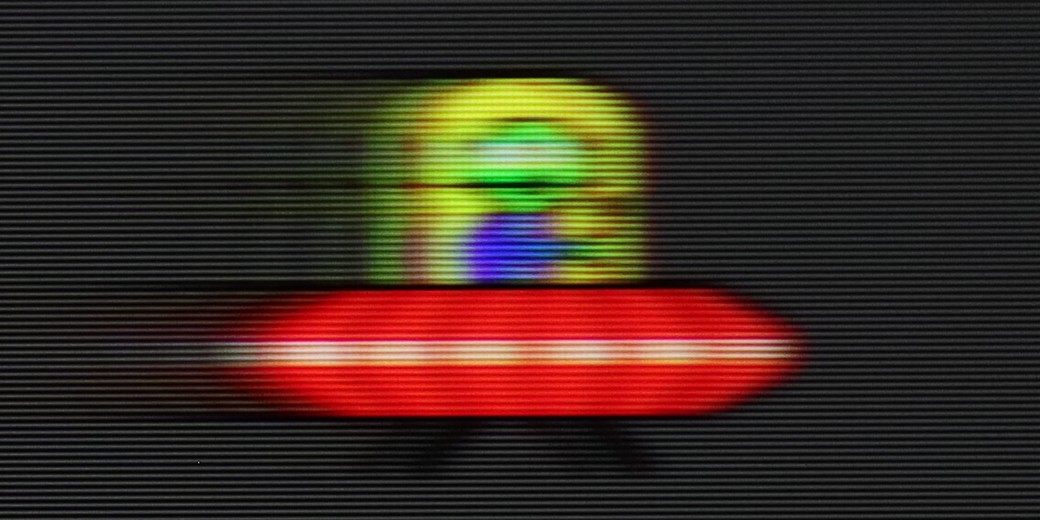
Smużenie ():
Smużenie (4K 120Hz):
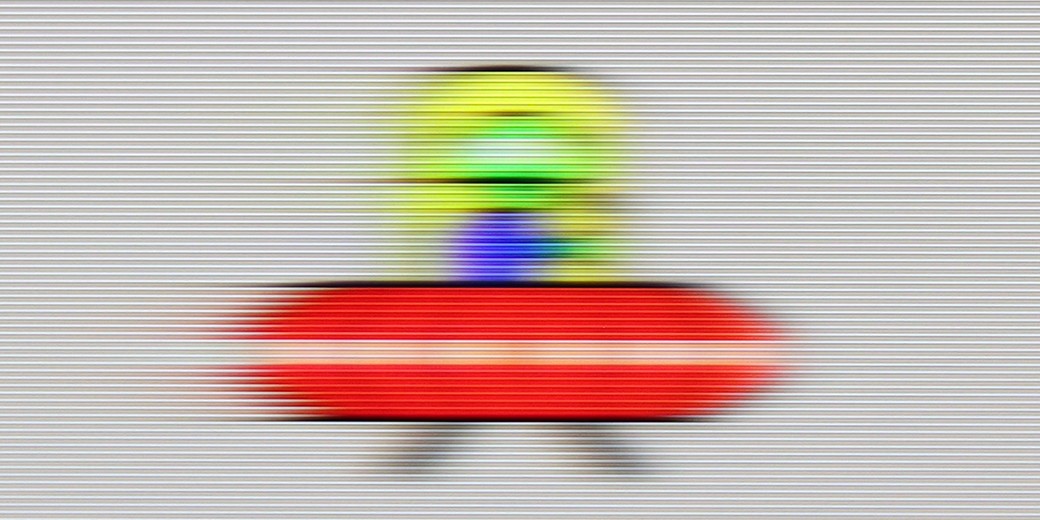
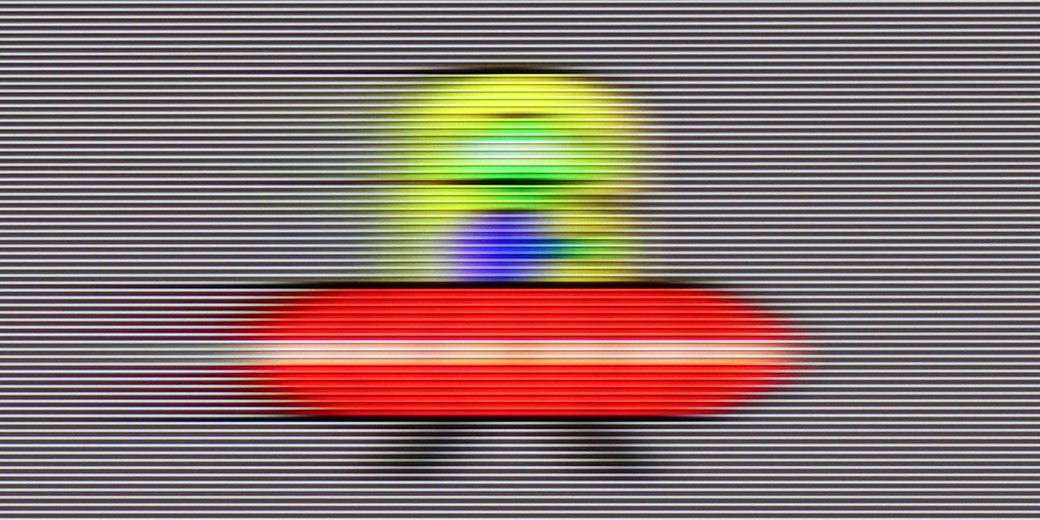
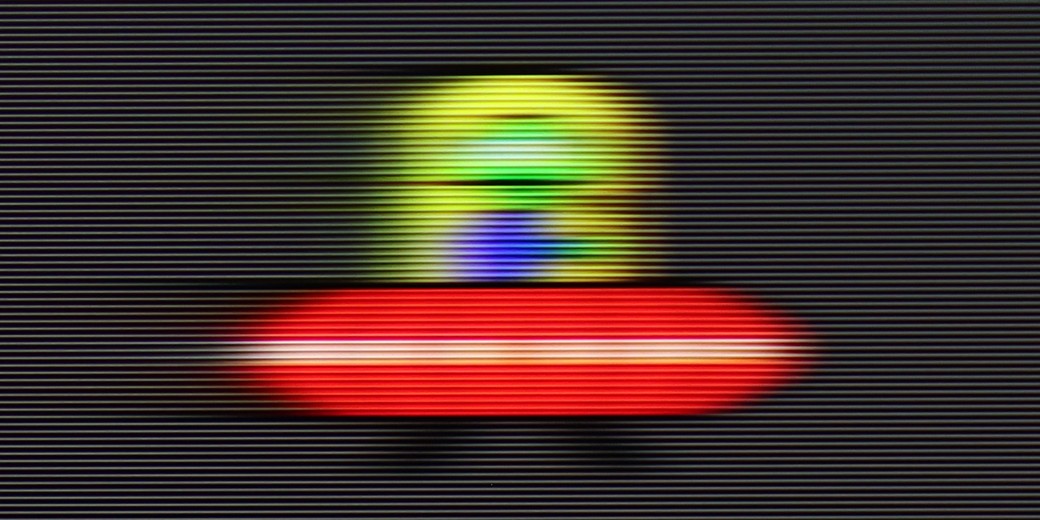
TCL MQLED85/C765 is equipped with a panel featuring a standard refresh rate of 120 Hz, with the capability to increase to 144 Hz when connected to a powerful computer. The television also offers a multi-level motion smoother, primarily aimed at users wishing to enhance motion fluidity in films. It allows for the adjustment of effect intensity on a scale from 0 to 10, enabling precise tuning of image smoothness to individual preferences. The response time of the panel is decent, but not perfect. We can observe blurring occurring behind both dark and medium objects.
Similar to the U7Q, the E8Q model is a fast television designed for dynamic content. It supports a refresh rate of 144 Hz at 4K resolution, and if, for some reason, someone is still gaming in Full HD – it can even reach 240 Hz. This is a significant advantage, especially for PC users looking for maximum smoothness. In everyday use, the television performs very well. The "Ultra Motion Smoothness" mode offers two sliders that allow you to customise the picture to your preference – whether more cinematic with the film frame preserved or highly smoothed, almost "series-like". It's good that the manufacturer provides a choice here instead of imposing one style. On sports material, live broadcasts, or in games – movement looks clean and stable. Of course, it is not at the OLED level, but for this price range, the E8Q performs really well.
Console compatibility and gaming features
9.8/10
8.5/10
- ALLM
- VRR
- VRR range48 - 144Hz48 - 240Hz
- Dolby Vision Game Mode
- Correct implementation of HGIG
- 1080p@120Hz
- 1440p@120Hz
- 4K@120Hz
- Game bar



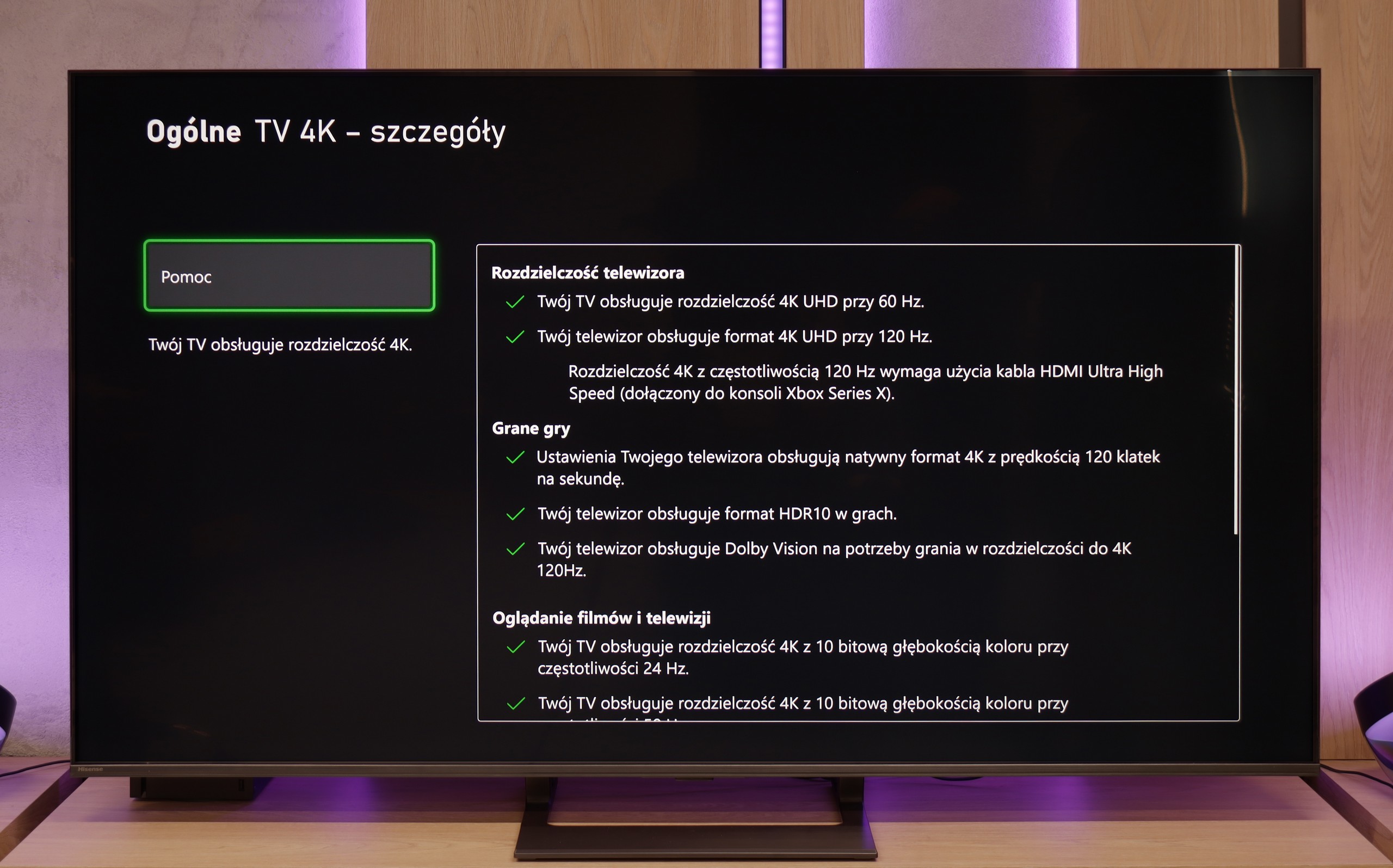

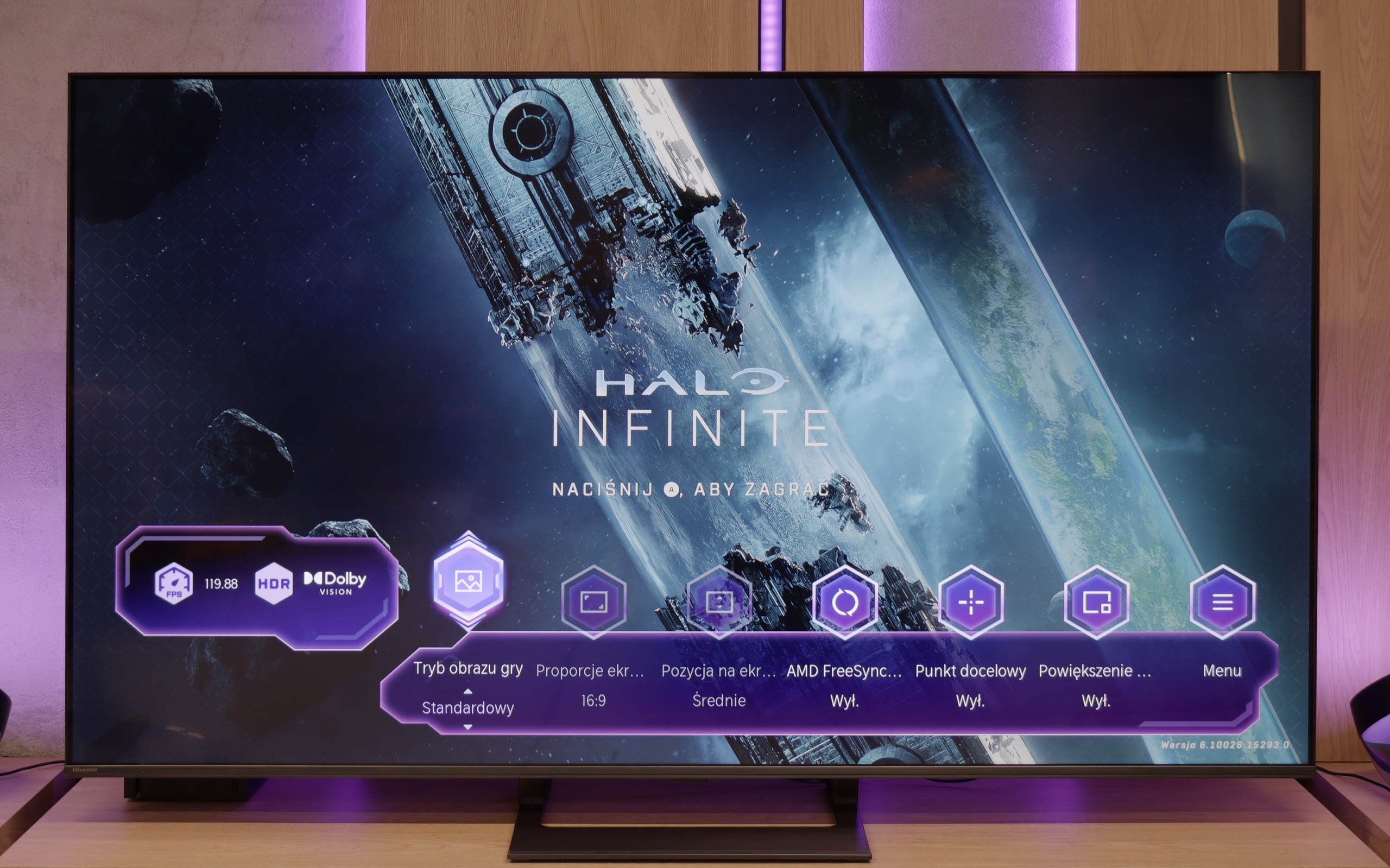


TCL MQLED85/C765 has received an impressive rating in the gaming features category, making it an excellent choice for gaming enthusiasts. The television supports all the latest technologies that significantly enhance the gaming experience. Among the key gaming features is ALLM (Auto Low Latency Mode), which automatically switches the TV to low-latency mode, minimising response time and ensuring smooth gameplay. VRR (Variable Refresh Rate) functioning in the range of 48 to 144 Hz eliminates stuttering and screen tearing in dynamic game scenes. Additionally, the TV supports Dolby Vision Game Mode, which provides better image quality in games with exceptional colour depth and contrast. TCL MQLED85/C765 also features a decent if not the best implementation of HGiG (HDR Gaming Interest Group), optimising HDR game display; however, for TCL, it causes detail in whites to be brightened, resulting in some elements merging into a white blob - we can read more about this in the colour reproduction section. It supports various resolutions, such as 1080p@120Hz, 1440p@120Hz, and 4K@120Hz, allowing players to enjoy higher image quality and better fluidity. The Game Bar feature allows easy switching between game settings and quick parameter control, greatly simplifying the adjustment of the television to individual needs. With support for G-Sync and FreeSync technologies, users of NVIDIA and AMD graphics cards will be pleased with the refresh rate synchronisation capabilities, eliminating tearing and stuttering issues, thereby providing a smoother and more immersive gaming experience.
MQLED85/C765 is a television that combines advanced technologies and excellent support for gamers, making it the perfect choice for those who wish to maximise their gaming experiences.
Hisense E8Q does not hide its gaming heritage. Even the specifications reveal that we are dealing with a television that will perform excellently as a gaming screen. Variable Refresh Rate (VRR)? It's there. Automatic switching to game mode (ALLM)? That's there too. Additionally, there is impressive refresh rate – 120 Hz in 4K or even 240 Hz in Full HD. Such a set is rare in this price segment. Everything works smoothly and without major surprises. The only missing element – similar to the U7Q – is support for HGiG. It’s a shame, as this feature facilitates adjusting the brightness curve to the capabilities of a specific television, improving visual compatibility with the intentions of HDR game creators. Without it, one has to manually fiddle with the settings, which does not always yield a satisfactory result.
Input lag
9.8/10
9.7/10
SDR
HDR
Dolby Vision
The latency time on the TCL MQLED85 television reaches impressively low levels in all conditions. Even the most demanding gamers will surely appreciate the minimal input lag of just 8 ms at 4K 120 Hz settings with HDR. Moreover, the latency remains at the same level even with Dolby Vision HDR turned on, which is not the case for many competing models.
The E8Q handles delays very well. For 120 Hz materials, the input lag is super low – practically unnoticeable even for more demanding gamers. At 60 Hz, the values are slightly higher, but still comfortably within the "placebo" limit – there’s nothing to complain about. The biggest increase in delay was observed in Dolby Vision Gaming mode. The television then requires more time to process the signal, but even in this case, it doesn’t exceed 30 ms. While these may not be perfect values, for most gamers – especially console gamers – this will not be a hindrance.
Compatibility with PC
8.6/10
8.6/10


TCL MQLED85 will perform well as a computer monitor. With support for chroma 4:4:4, the text on the screen is sharp and legible, which is important for those working with word documents or spreadsheets. One of the greatest assets of this model is its exceptionally low input lag in "PC" mode, which is just 8 ms. This is a reference-level result that ensures fluidity and responsiveness, crucial for both gamers and those engaged in video editing. However, it is worth noting that there is a certain issue related to font display on dark backgrounds. When zooming in on the tested font image, one can see that the horizontal lines are darker compared to the vertical ones. This means that the sub-pixels in the television do not fully illuminate in this case, which can affect the quality of the displayed text. Nevertheless, the overall performance of TCL MQLED85 as a computer monitor is very good and will certainly meet the expectations of many users.
In terms of collaboration with the computer, the E8Q performs really well. It supports chroma 4:4:4 at full 4K resolution and at the highest refresh rate, so the readability of fonts – even the smallest ones – is at a very good level. There are some minor blurriness issues with exceptionally thin fonts, but in everyday use, this is hard to consider a serious problem. A nice addition for PC gamers is the ability to achieve up to 288 Hz at lower resolutions. The E8Q communicates effortlessly with powerful graphics cards, making it an interesting choice not only for movies or consoles but also for gaming on the computer.
Viewing angles
3.2/10
3/10
The viewing angles on the TCL MQLED85 television are not its strong suit. The use of a VA panel means that the picture loses a significant amount of brightness when viewed at an angle. Changing the viewer's position, especially when watching with a larger group, can cause colours to appear less saturated and the contrast to become less pronounced. For this reason, it is recommended to sit directly in front of the screen to fully enjoy the picture quality. Although the television offers excellent colour reproduction from a direct view, the loss of brightness and detail at an angle can be problematic for those planning to use the television in a larger room or from different locations.
E8Q, like most TVs with a VA panel, looks best when we sit directly in front of the screen. In this position, one can expect deep blacks, good colour saturation, and high contrast. Unfortunately, it only takes a slight shift to the side for the image quality to diminish – colours begin to fade, and blacks become more grey than black. This is not surprising, but it is worth keeping in mind, especially if we plan to watch with a larger group from different spots in the living room. As a consolation – in return, we get significantly better black levels than in IPS panels.
TV efficiency during daytime
6.3/10
6.2/10



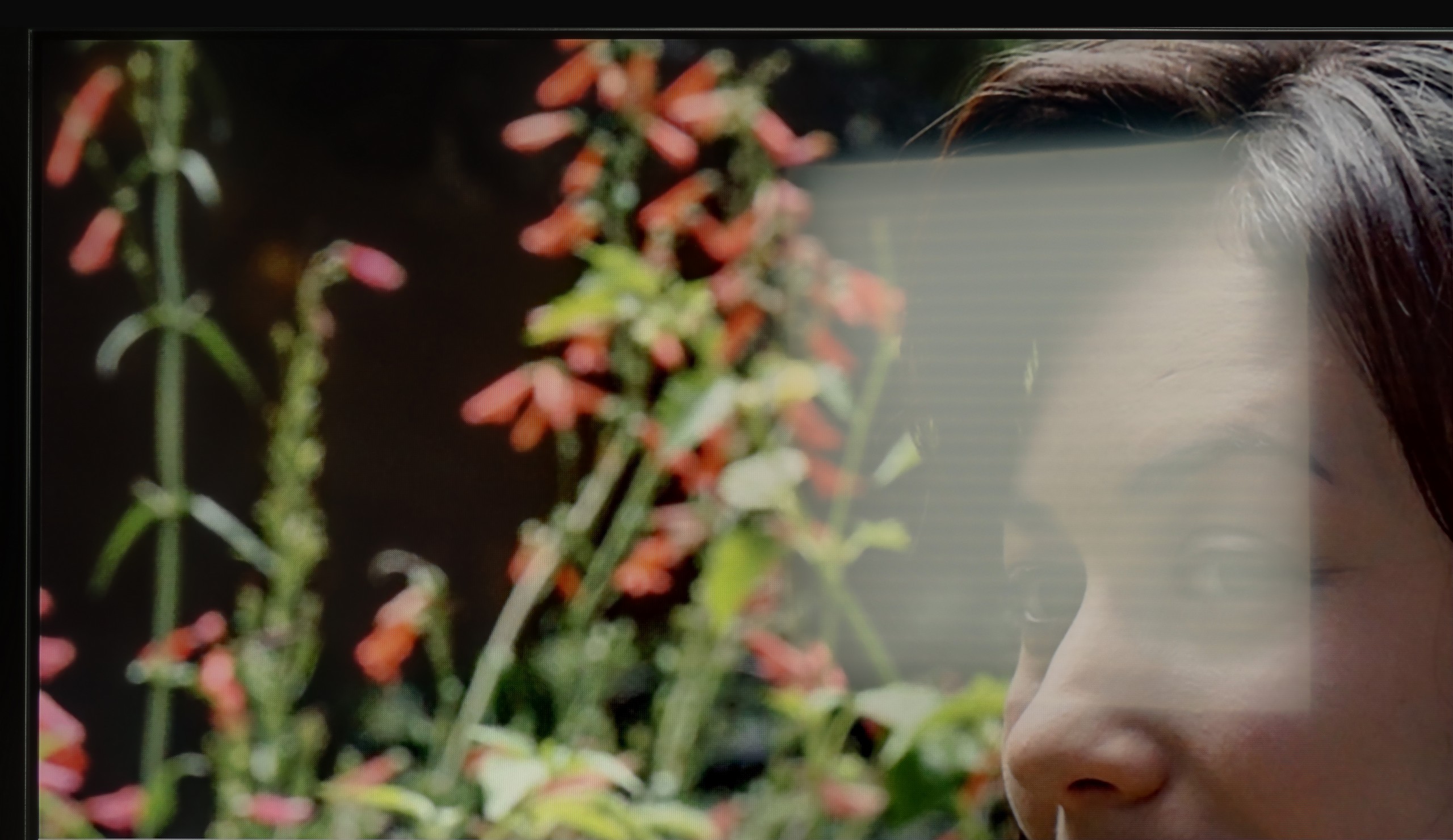
Matrix brightness
Average luminance SDR
Hisense E8Q: 504 cd/m2
TCL MQLED85 / C765: 618 cd/m2
MQLED85 performs reasonably well in daytime conditions, and it is worth noting the satin finish of the panel. Although it doesn't handle reflections perfectly, it offers decent performance in various lighting conditions. An average brightness level of over 600 nits is an impressive achievement, allowing for comfortable viewing even in well-lit rooms. As a result, the television performs well both during the day and during evening movie sessions, providing satisfactory picture quality.
Hisense E8Q is not afraid of bright interiors. Even if it is full sunlight outside, the television can maintain good image clarity. With a brightness level of around 500 nits, it is perfectly fine to watch content during the day without the feeling that everything is drowning in glare. The satin coating on the screen also helps to nicely suppress reflections – it does not eliminate them completely, but reduces them enough so they do not interfere with daily viewing.
Details about the matrix
Subpixel Structure:

Panel uniformity:

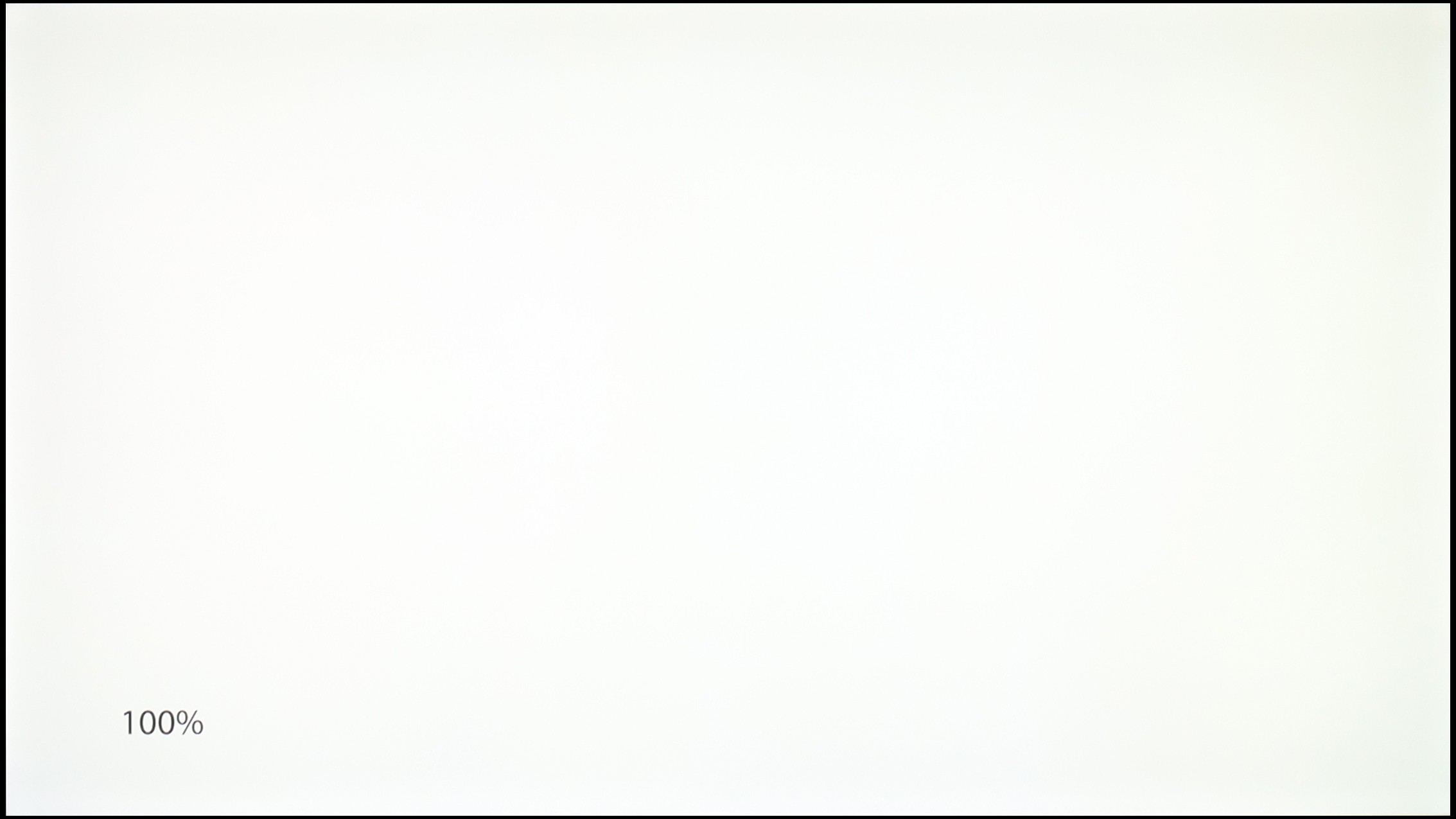
TCL MQLED85 / C765
Hisense E8Q
TV features
7.1/10
8.9/10
- HDMI inputs2 x HDMI 2.0, 2 x HDMI 2.1 48Gbps2 x HDMI 2.0, 2 x HDMI 2.1 48Gbps
- Other inputsRCA (Chinch)RCA (Chinch)
- OutputsToslink (Optical audio), eARC (HDMI), ARC (HDMI)Toslink (Optical audio), eARC (HDMI), ARC (HDMI), Mini-Jack (Headphones)
- Network InterfacesWi-Fi 2.4GHz, Wi-Fi 5GHz, Ethernet (LAN) 100MbpsWi-Fi 2.4GHz, Wi-Fi 5GHz, Ethernet (LAN) 100Mbps
- TV receptionDVB-T, DVB-T2, DVB-S, DVB-S2, DVB-CDVB-T, DVB-T2, DVB-S, DVB-S2, DVB-C
Classic features:
- Recording to USB (terrestrial TV)
- Recording programming
- Picture in Picture (PiP)
- RF remote control (no need to aim at the screen)
- Backlit remote control
- Teletext
- Audio only mode
- Possibility to connect Bluetooth headphones to the TV
- Possibility to simultaneously use Bluetooth headphones and the TV speaker
Smart features:
- AirPlay
- Screen mirroring (Windows Miracast)
- Wyszukiwanie głosowe
- Voice search in native language
- Ability to connect a keyboard and mouse


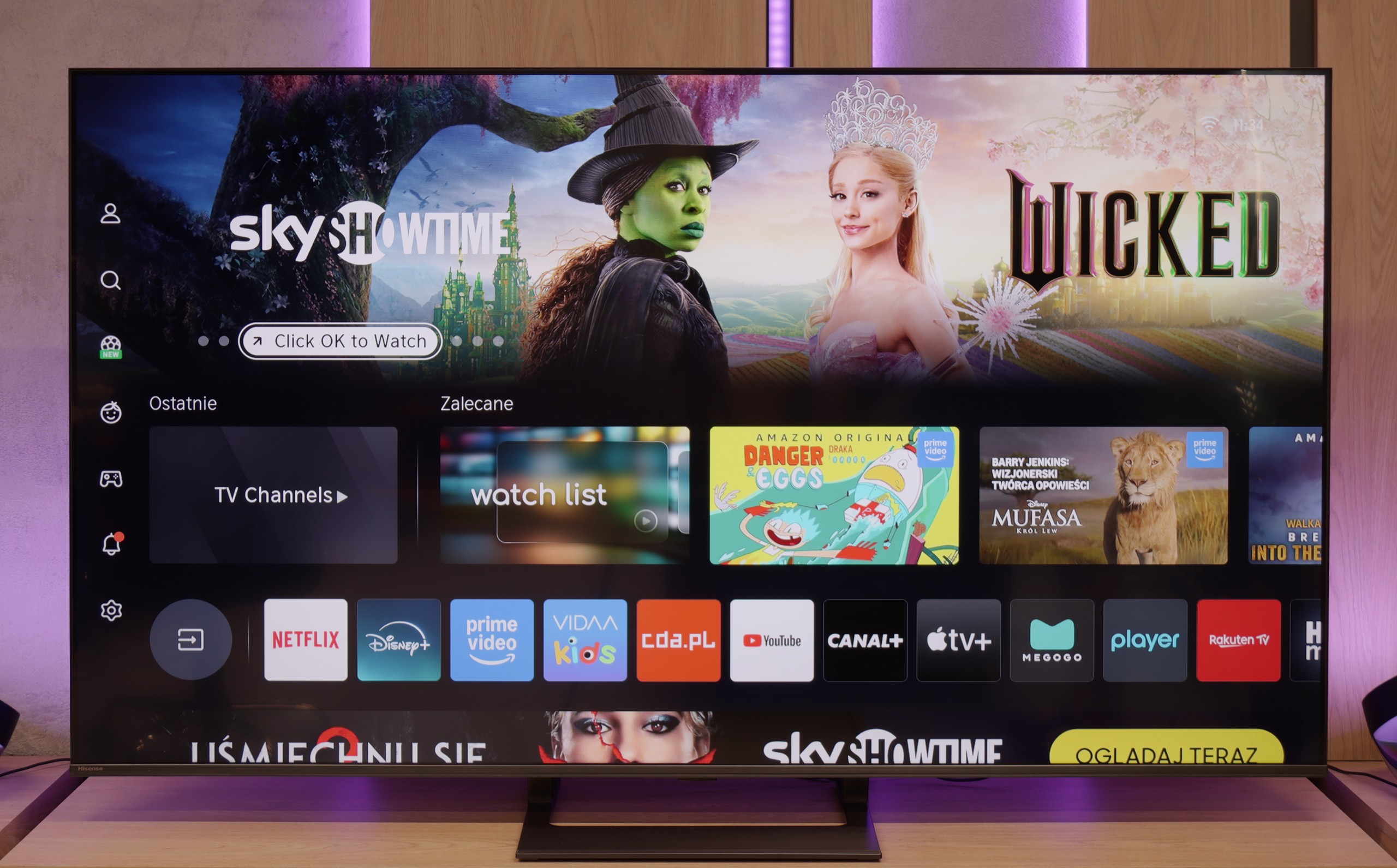
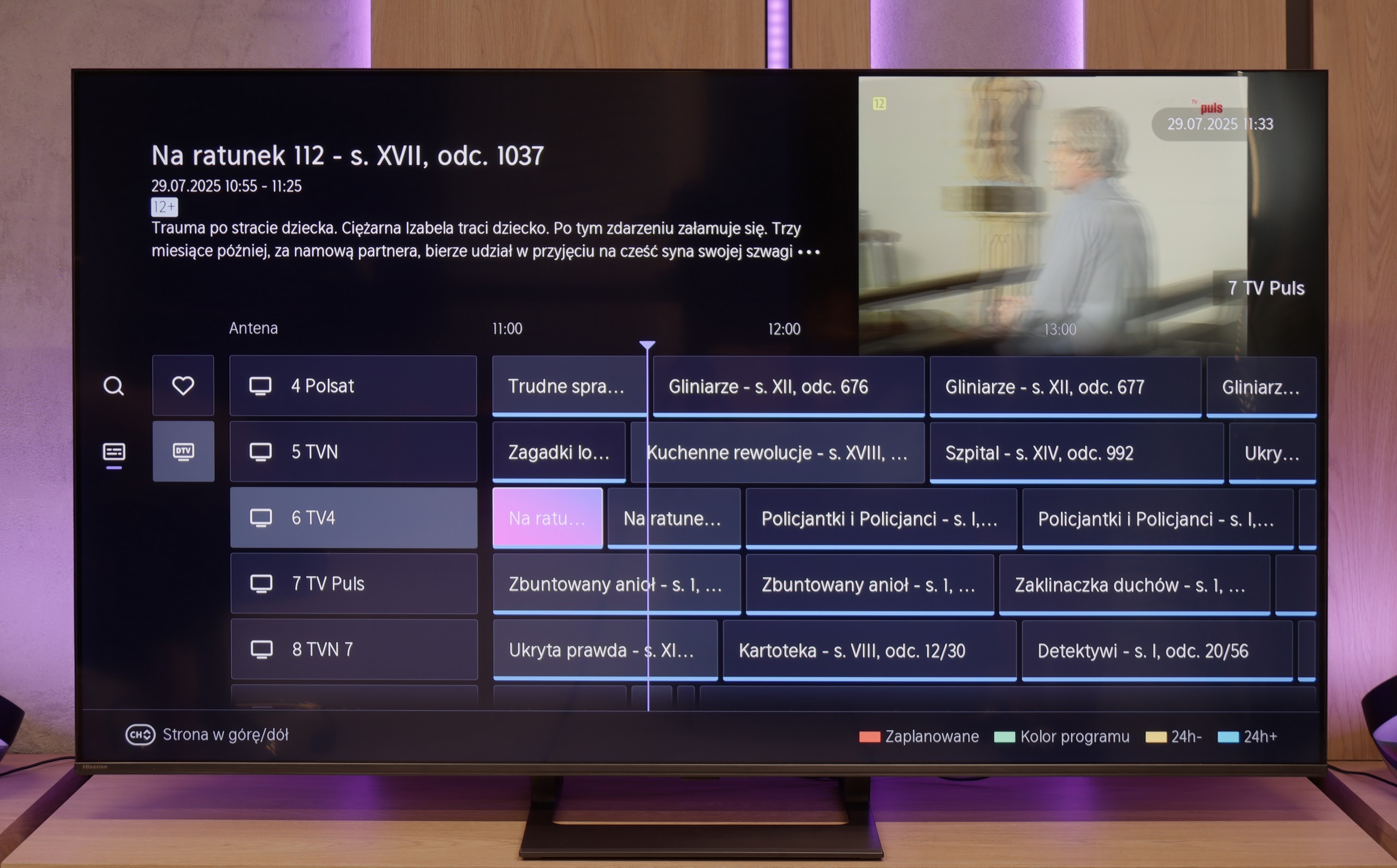


TCL MQLED85 television offers many features that enhance user comfort, with the centrepiece of its functionality being the Google TV system. This modern interface allows for easy content searching as well as access to applications available in the Google Play store. Users can utilize voice search in Polish, which greatly facilitates navigation and allows for the quick discovery of interesting programmes, films, or applications. It is also worth noting that Google TV is currently the only system on the market that does not restrict Polish users in accessing applications, offering the greatest availability among all platforms. However, in the context of traditional television viewing, this television has its limitations. It does not offer recording functionality, which may be a significant drawback for those who would like to save their favourite programmes. Additionally, the absence of the Picture-in-Picture (PIP) option limits the ability to simultaneously follow several video sources. On the other hand, the television features the "MultiVision" function, which allows for screen division between the television and a mobile device. This enables users to use applications on their phone while simultaneously watching a television programme. This solution will certainly appeal to those who enjoy multitasking and want to watch television while using social media or browsing the internet on their smartphone. Despite certain limitations, the TCL MQLED85 presents itself as a solid option for users who value modernity and functionality.
Classic Features – E8Q
The Hisense E8Q is not just equipment for gamers or movie enthusiasts – it can also serve as a daily television for the whole family. We can record programmes to USB, connect headphones or speakers via Bluetooth, and the entire interface – including the channel guide – is clear and easy to use. The only thing missing is the PiP function, but apart from that, the set of classic features is really comprehensive.
Smart TV – VIDAA System
The E8Q operates on the VIDAA system, which becomes more refined year after year. Voice search in Polish works flawlessly, and it's easy to stream content from your phone (AirPlay and screen mirroring). The system itself runs smoothly without hiccups, although – as is often the case with closed platforms – there may occasionally be one or two less popular apps missing. Therefore, it's worth checking before purchase whether everything we use on a daily basis is available there.
Playing files from USB
8.9/10
8.2/10
Supported photo formats:
Maximum photo resolution:

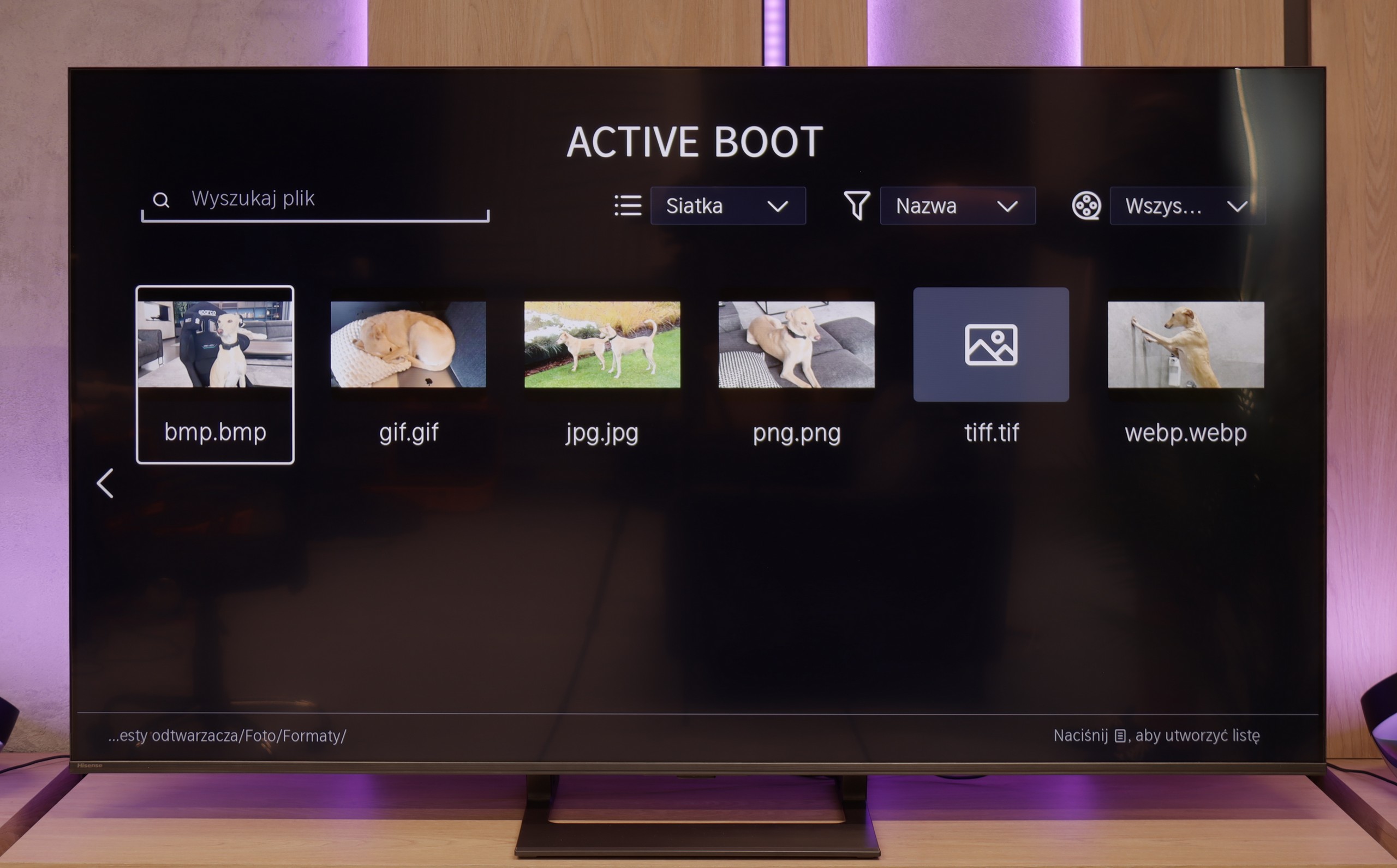
Thanks to the built-in player, the television is capable of playing most file formats found on external storage devices, making it a versatile tool for consuming multimedia. However, there may be certain limitations in supporting some formats, which could be annoying for more demanding users. Fortunately, the Google TV system allows the installation of other media players from Google Play, which helps eliminate compatibility issues. As a result, users have the option to choose applications that best meet their needs, significantly enhancing the functionality of the television.
The built-in media player in the E8Q performs quite well. It supports most popular video and audio formats, and files from USB drives or external disks play without any major issues. Polish characters? They are supported. Subtitles? They work. The only minor drawback is the occasional problem with displaying high-resolution photos – especially those from cameras or smartphones. So, if you plan to show holiday photos on the big screen, it’s worth checking beforehand whether they all load correctly from disk memory or a USB drive.
Apps
9.6/10
7.7/10














































Sound
6.9/10
5.5/10
- Subjective sound quality:6.9/105.5/10
- Dolby Digital Plus 7.1:
- Dolby True HD 7.1:
- Dolby Atmos in Dolby Digital Plus (JOC):
- Dolby Atmos in Dolby True HD:
- DTS:X in DTS-HD MA:
- DTS-HD Master Audio:
The sound of the television TCL MQLED85 can be described as decent, making it sufficient for daily viewing of films, television programmes, and games. The speakers branded by Onkyo offer surprisingly good audio quality, and the sound does not screech or distort even at higher volumes.
Unfortunately, the Hisense E8Q did not make the best impression on us. Although on paper it has speakers with a power of 40 W (which is only slightly less than 50 W in the U7Q), in practice the difference is significant – and unfortunately not in favour of the E8Q. During testing, it quickly became apparent that something was amiss. When the volume was turned up above 40–50%, the entire back casing began to resonate, and unpleasant crackling sounds came from the TV. Even during regular viewing, it was hard not to notice this, and certainly – to not hear it. In this form, it is difficult to speak of listening comfort. We do not rule out that this was an issue with a specific test unit, but nonetheless – it is worth keeping this in mind. If you care about good sound, consider connecting a soundbar or… just go for the U7Q, which performs significantly better.


